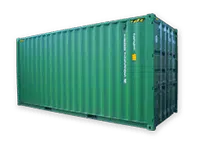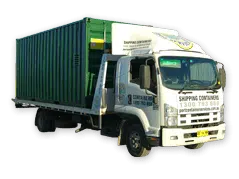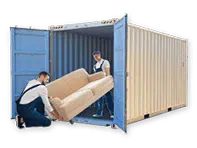Damage to shipping containers can cost your company vast amounts, but there are so many steps you can take to avoid this unnecessary loss. By following these simple suggestions, you can start the New Year on a productive note.
What are the types of shipping containers?
Before we delve into the many ways you can protect your shipping containers, here’s a quick look at the different types of storage units available for sale or hire.
- Basic shipping container: This is also known as the dry storage container and consists of three walls, a roof, and a waterproof door made of primed steel. These are available in 40ft and 20ft sizes to easily transport a range of goods, and while 10ft sizes are available, they aren’t generally used as shipping container storage.
- Flat rack container: This has no side walls and a base with collapsible panels on the short sides. It’s often used to transport heavy goods like machinery.
- Open-top container: This is a standard container with a convertible roof that can be removed for taller goods.
- Open-side container: This has an additional door for easier loading.
- Half-height container: This is half the height of the basic shipping container for cargo such as coal.
- Insulated / thermal / refrigerated container: This has regulated temperature control for perishable items.
- Car carriers: These have collapsible sides for the shipment of cars.
20 tips to transport and store containers efficiently
Whichever container you buy or hire, you will need to consider the storage and transportation options carefully to ensure there is no damage to either the container, or the goods being transported. Here are some useful guidelines.
- Ensure the container is securely locked – Use a strong padlock or other security devices to prevent theft or tampering.
- Choose an appropriate location – Select an area that is not prone to extreme weather conditions, such as flooding and high winds.
- Prepare for transportation – Make sure you have the right equipment and personnel ready before attempting to move your shipping container, as well as the correct method of transportation.
- Consider weight distribution – When you’re loading items into the container, be aware of the weight of each item.
- Properly ventilate your shipping container – Open windows and/or doors to allow air circulation within the container.
- Protect against corrosion – Cover any exposed metal surfaces with a protective coating to avoid rust.
- Maintain pest control measures – Place traps or use pest repellents inside your shipping containers to keep away rodents and insects that could damage your goods.
- Inspect for damage – Check for signs of damage regularly, including cracks, dents or holes so that you can take corrective action if needed.
- Use space efficiently – Maximize space by stacking items correctly and using dividers and partitions where necessary.
- Implement safety measures – Wear protective gear and be aware of safety protocols when moving or handling your shipping container.
- Choose the right storage facility – Look for a storage yard that offers climate control, security measures, and other amenities you may need.
- Properly dispose of any waste – Make sure you properly dispose of any waste items or hazardous materials within your shipping container.
- Follow local regulations – Know what the applicable regulations are for transporting and storing a shipping container in your area and adhere to them.
- Document maintenance – Keep detailed records of maintenance activities and a scheduled maintenance plan so that you’re aware of when repairs may be needed.
- Check insurance – Make sure you’re properly insured while transporting or storing your shipping container.
- Consider a long-term storage solution – If you anticipate needing your container for an extended period, consider purchasing or renting a permanent storage unit to keep it safe and secure.
- Consider unforeseen challenges – Be prepared for any unforeseen issues that may arise, such as delays in delivery or additional costs.
- Complete a post-delivery check – Once your shipping container has arrived at its destination, make sure to inspect it for any signs of damage and document the results.
- Invest in quality equipment – Always buy or hire quality equipment to ensure the safe, efficient and cost-effective transportation of your shipping container.
- Use a professional service provider – If managing it yourself isn’t an option, consider hiring a professional service provider who specializes in the movement and storage of shipping containers.
If you’re looking for quality containers, whether for hire or sale, then Port Shipping Containers is your first stop. They also modify a huge range of shipping containers in the industrial and commercial sectors. With a large range of shipping containers in stock, and decades of industry experience, Port Shipping Containers is your one-stop shop for all your shipping container requirements.








